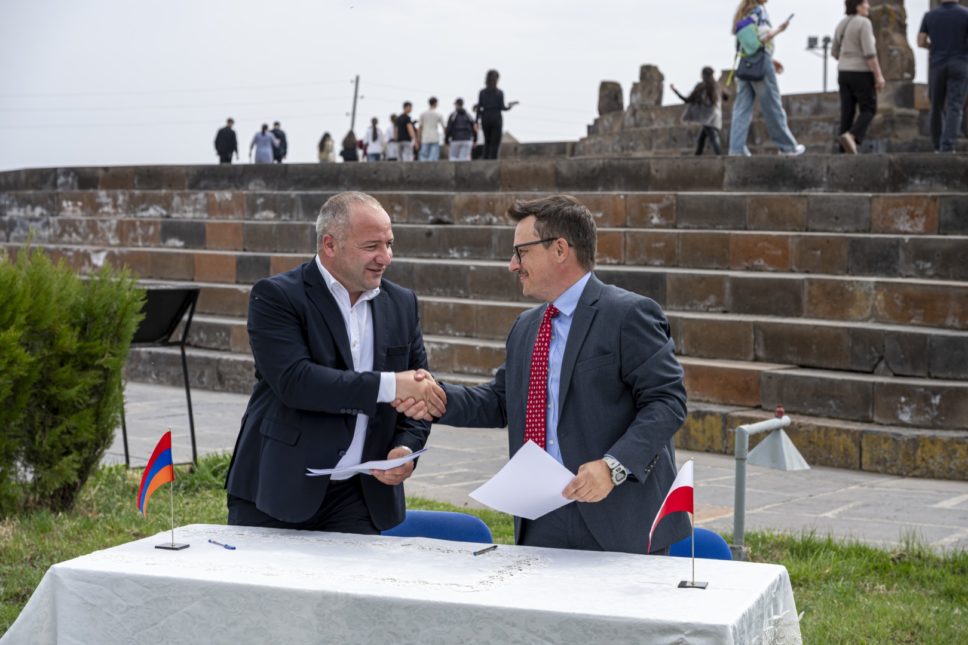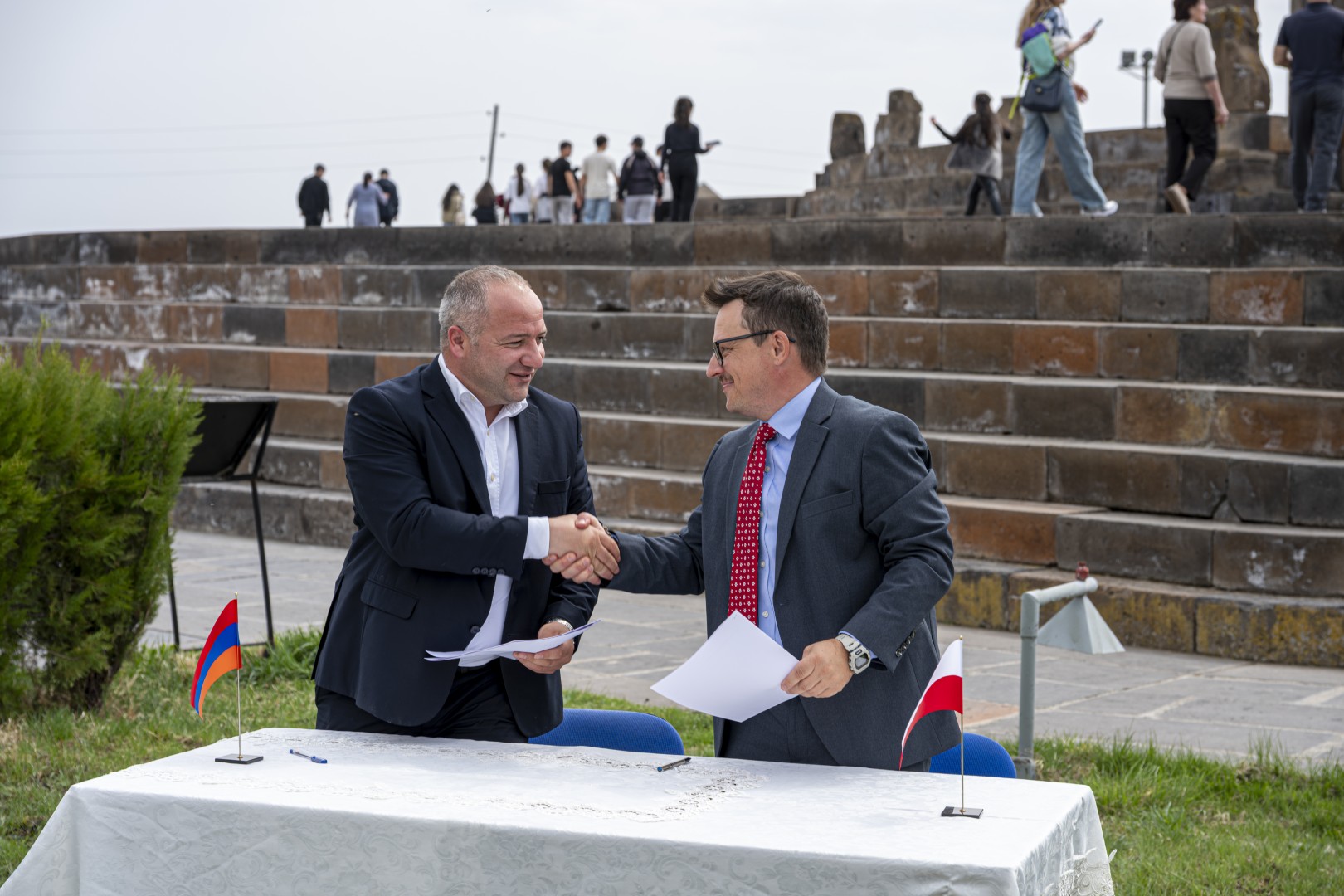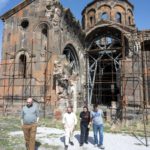The Polish Centre of Mediterranean Archaeology, University of Warsaw has signed an agreement for a new research project at the early medieval site of Zvartnots in Armenia. This is one of the most important archaeological complexes in the country and is listed as a UNESCO World Heritage site.
The agreement for joint excavations between the PCMA UW and the Service for the Protection of Historical Environment and Cultural Museum-reservations was signed by Prof. Artur Obłuski and Armen Hovhannisyan, the Director of the Service, in a ceremony held near the ruins of the Zvartnots Cathedral on March 29th, 2025.
The new research project will focus on interdisciplinary studies and will be carried out by the PCMA UW, the Service, which are to be joined by the University of Hamburg. Dr Nicola Babucic from the University of Hamburg also participated in the meeting.
The Zvartnots archaeological complex is located 15 km west of Yerevan and includes the cathedral built in the mid-7th century, regarded as one of the masterpieces of early medieval Christian architecture (destroyed by an earthquake in the 10th century), a colonnaded palace of the Catholicos located southwest of the cathedral, adjacent bathhouses with heated floors and walls, and a wine press situated on the southern side of the complex. The first excavations at Zvartnots were conducted by Armenian clergymen in 1893. Archaeological work continued between 1900 and 1907, with the most recent excavations taking place in 1958.
According to legend, the Zvartnots Cathedral was built at the site of a meeting between Armenia’s first Christian king, Tiridates, and the first Catholicos, St. Gregory the Illuminator, which took place in the early 4th century. This makes the site of immense cultural significance to Armenia’s heritage.
In 2000, by decision of the UNESCO World Heritage Centre, the Zvartnots historical and cultural complex was added to the UNESCO World Heritage List under the name “Cathedral and Churches of Echmiatsin and the Archaeological Site of Zvartnots”.
The first season of the project’s work is scheduled for late spring of this year.
-
Podpisanie umowy na wspólny projekt w Zwartnoc/ Signing of the agreement for the joint project in Zvartnost (fot. Adrian Chlebowski)
-
Wizyta w ruinach średniowiecznego kościoła w Talin. Na zdjęciu, oprócz pracowników CAŚ UW są: Hasmik Simonyan i Avetis Grigoryan, przyszły współkierownik Armeńsko-Polskiego projektu w Zwartnoc/ A visit of the PCMA UW delegation to the ruins of a medieval church in Talin with Hasmik Simonyan and Avetis Grigoryan, the future co-director of the Armenian-Polish project in Zvartnost (fot. Adrian Chlebowski)
-
Zwiedzanie wystawy średniowiecznej w Muzeum Historii Armenii w towarzystwie prof. Ashota Piliposyana, dr Avetisa Grigoryana i Hasmik Simonyan / Visit to the medieval art gallery in the Museum of Armenian History, with Prof. Ashot Piliposyan, dr Avetis Grigoryan and Hasmik Simonyan (fot. Adrian Chlebowski)





